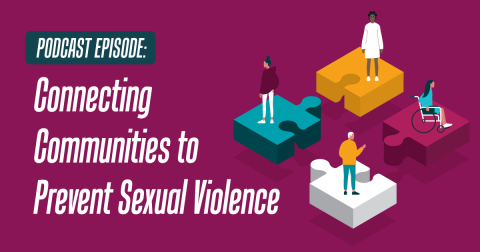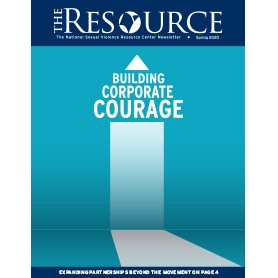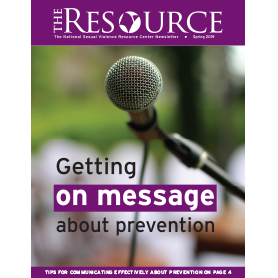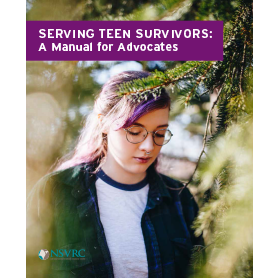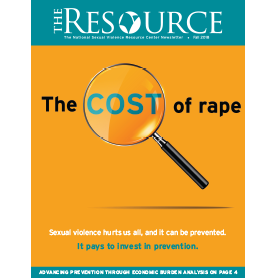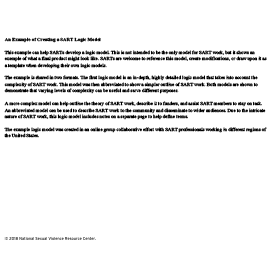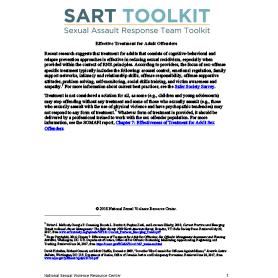Megan Thomas is the Communications Specialist at NSVRC. She manages the national newsletter The Resource, as well as editing, reviewing, and designing publications.
- Marzo 05, 2021
- Megan Thomas
At least three women have reported sexual harassment by New York Governor Andrew Cuomo, as political leaders across the country face similar claims of inappropriate behavior. It is unacceptable to tolerate and excuse sexual harassment and discrimination in politics. Our leaders have the opportunity and responsibility to help support survivors and further the prevention movement in a constructive way. Sexual harassment is a pervasive problem, especially for women. One in two women (49%) and nearly one in five men (18%) have been sexually touched in an unwelcome way (Kearl, 2019). Sexual
- Diciembre 08, 2020
- Megan Thomas
Crime prevention through environmental design (CPTED, or “situational prevention”) is an established criminological theory that has recently found a new life in sexual violence prevention. How can CPTED concepts be used to change the physical environment of an area to help prevent sexual violence? In this episode, we explore how a coalition in Kansas City, Kansas is designing environments with the goal of preventing sexual assault. Listen as NSVRC’s Sally Laskey talks with Vanessa Crawford Aragon, Community Prevention Coordinator from the Metropolitan Organization to Counter Sexual
- Noviembre 25, 2020
- Megan Thomas
In this episode, NSVRC’s Prevention Team talks about the importance of community connectedness. Community-level prevention work moves us beyond individual approaches – it’s about collective action, building partnerships, and creating access to resources to support community health. Listen as they discuss ways that communities are mobilizing to prevent violence.
- Septiembre 14, 2020
- Megan Thomas
NSVRC’s Evaluation Coordinator Sally Laskey talks with sexuality educator Dr. Elizabeth Schroeder about using technology and social media to teach healthy sexuality and why it's so critical for sex ed to be comprehensive and inclusive of gender identity, sexual orientation, and more. They also discuss Rights, Respect, Responsibility — the first-ever K-12 sex ed curriculum that fully meets the National Sexuality Education Standards. Watch for more Resource on The Go episodes on healthy sexuality under the "Sed Ed" title.
- Mayo 12, 2020
- Megan Thomas
The Spring 2020 edition of The Resource focuses on expanding prevention — whether that's through innovative partnerships, social change initiatives, or new media through which we share survivor stories. In this issue, you'll find: Tips about partnering with corporations from organizations that have done it successfully A spotlight on the Michigan Coalition to End Domestic and Sexual Violence's anti-oppression and inclusion work A look at popular podcasts that intersect with the movement to end sexual assault A milestone marking how the conversation around prevention has
- Julio 09, 2019
- Megan Thomas
The Spring 2019 edition ofThe Resource looks at the wide range of prevention activities happening all across the country! Opening with tips from Berkeley Media Studies Group on how to effectively communicate about prevention, this issue also includes: Four winners of RALIANCE's first-ever Honors Awards A spotlight on the Women's Coalition of St. Croix's innovative new radio drama A milestone marking ten years of the Sexual Assault Demonstration Initiative (SADI) A tool connecting American Indian and Alaska Native survivors with services We also take a look back at the success of
- Diciembre 14, 2018
- Megan Thomas
This manual provides a brief overview on the unique issues young people who are sexual violence survivors face. Also included are tip sheets on working with teen survivors, information on confidentiality and mandated reporting laws, information on the teen brain, an annotated bibliography of recent research, and more. Publish Date 2018
- Noviembre 21, 2018
- Megan Thomas
The Fall 2018 edition of The Resource covers the CDC study on the lifetime cost of rape, as well as the National Coalition for Sexual Health's five action steps to good sexual health. The newsletter also spotlights the work of the Metropolitan Organization to Counter Sexual Assault (MOCSA) and the upcoming Sexual Assault Awareness Month campaign, plus: More about NSVRC's new director, Yolanda Edrington Information about two new online toolkits Four books from the NSVRC library you may be interested in reading Publish Date November 21, 2018
- Septiembre 18, 2018
- Megan Thomas
This example can help SARTs develop a logic model. This is not intended to be the only model for SART work, but it shows an example of what a final product might look like. SARTs are welcome to reference this model, create modifications, or draw upon it as a template when developing their own logic models. Publish Date
- Julio 12, 2018
- Megan Thomas
This resource describes effective treatment for adult offenders, such as emotional regulation, family support networks, social skills training, and more. Publish Date
Paginación
- Página anterior
- Página 3
- Siguiente página



